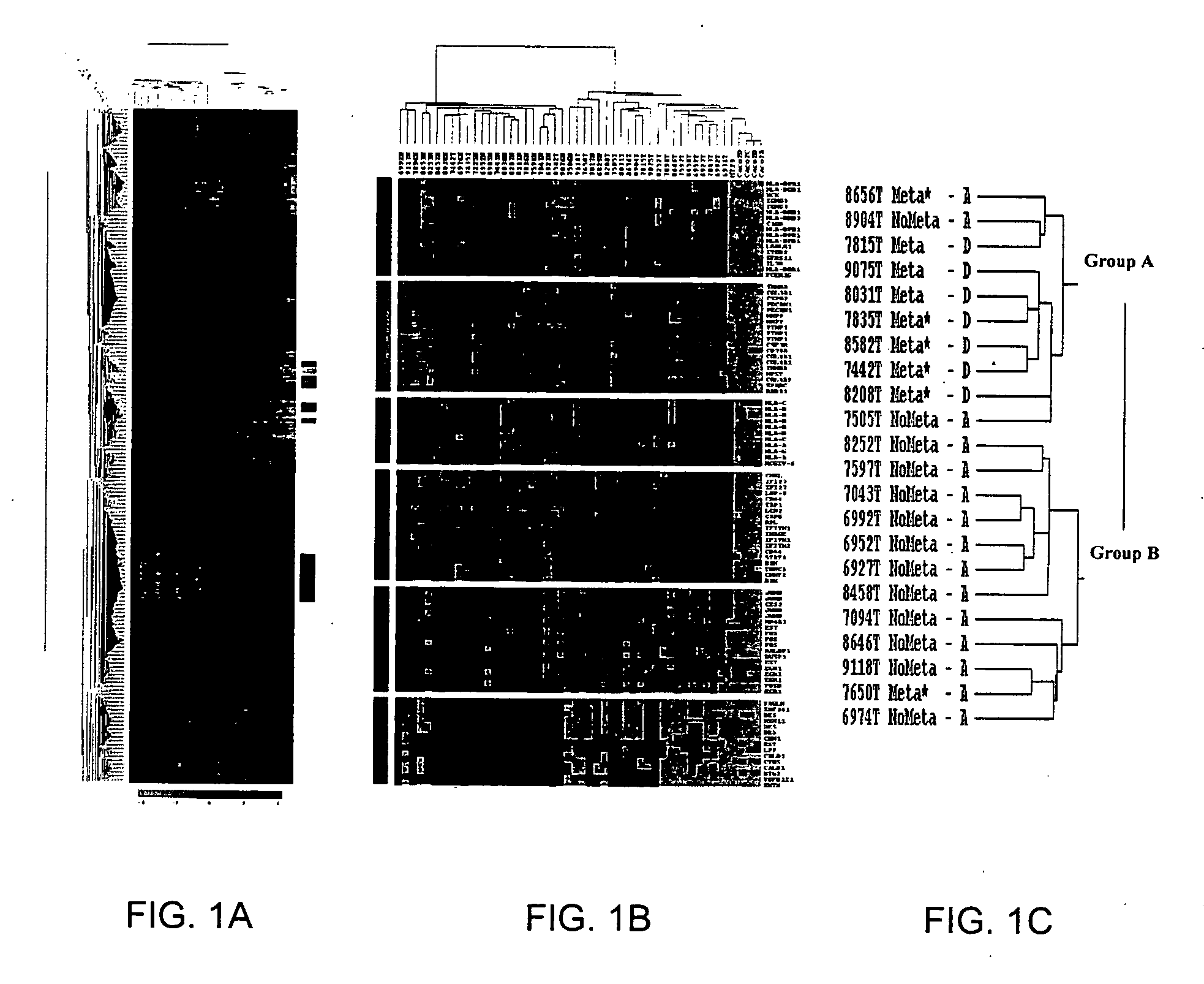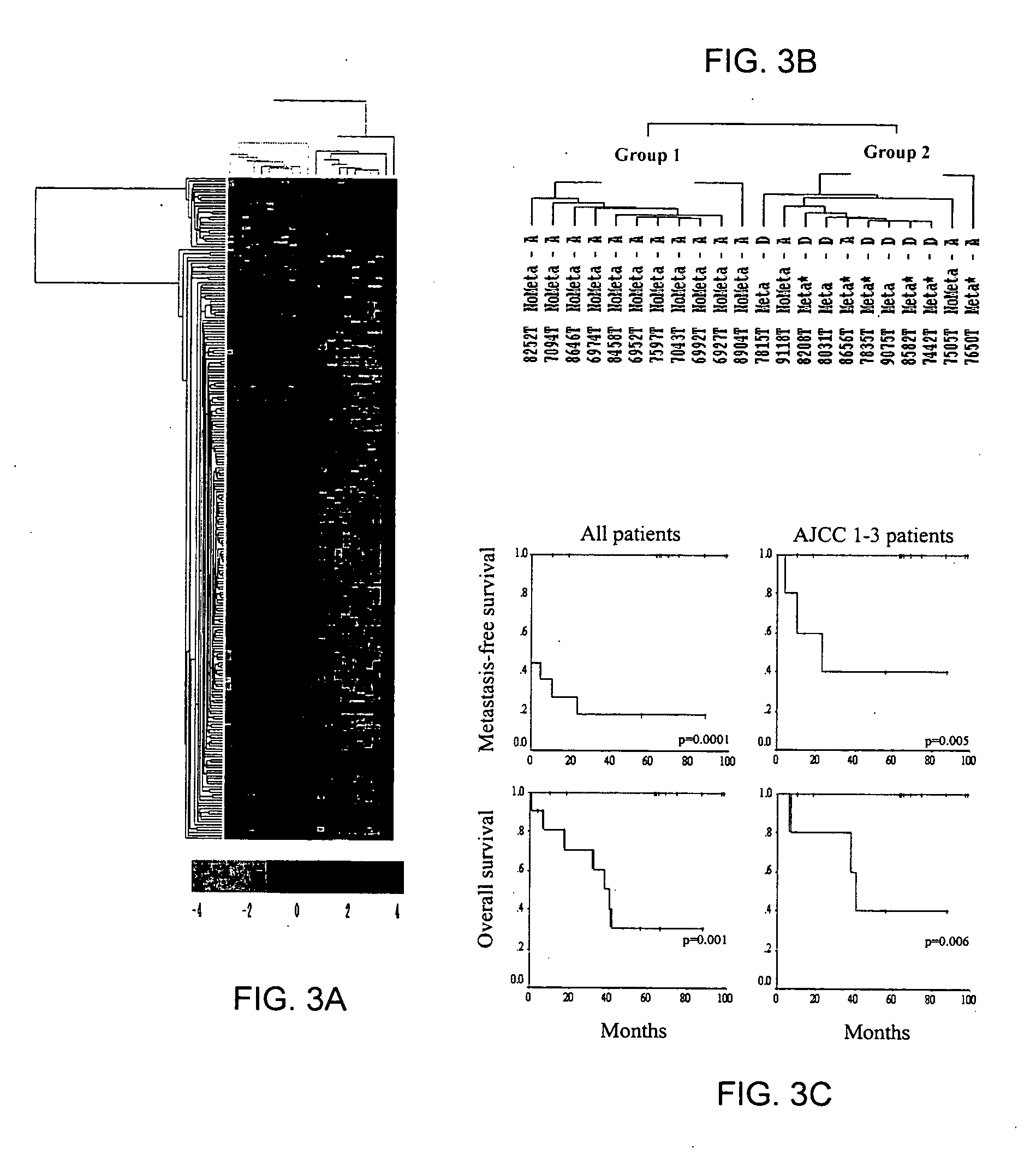Gene expression profiling of colon cancer with DNA arrays
a gene expression and colorectal cancer technology, applied in the field of polynucleotide analysis, can solve the problems of insufficient diagnostic tools to accurately diagnose and predict survival, unable to achieve significant progress, and remains one of the most frequent and deadly neoplasias, so as to improve the prognostic classification of crc.
- Summary
- Abstract
- Description
- Claims
- Application Information
AI Technical Summary
Benefits of technology
Problems solved by technology
Method used
Image
Examples
example
[0109] The invention will now be illustrated with the following non-limiting examples.
[0110] 1) Gene expression profiling of CRC and unsupervised classification
[0111] The mRNA expression profiles of 50 cancer and non-cancerous colon samples, including 45 clinical tissue samples and 5 cell lines, were determined using DNA microarrays containing ˜9,000 spotted PCR products from known genes and ESTs. Both unsupervised and supervised analyses were performed on all samples following normalization of expression levels.
[0112] Unsupervised hierarchical clustering of all samples based on the total gene expression profile was first applied. Results were displayed in a color-coded matrix (FIG. 1A) where samples were ordered on the horizontal axis and genes on the vertical axis on the basis of similarity of their expression profiles. The 50 samples were sorted into two large clusters that extensively differed with respect to normal or cancer type (FIG. 1B, top): 87% were non-cancerous in the...
PUM
| Property | Measurement | Unit |
|---|---|---|
| Therapeutic | aaaaa | aaaaa |
Abstract
Description
Claims
Application Information
 Login to View More
Login to View More - R&D
- Intellectual Property
- Life Sciences
- Materials
- Tech Scout
- Unparalleled Data Quality
- Higher Quality Content
- 60% Fewer Hallucinations
Browse by: Latest US Patents, China's latest patents, Technical Efficacy Thesaurus, Application Domain, Technology Topic, Popular Technical Reports.
© 2025 PatSnap. All rights reserved.Legal|Privacy policy|Modern Slavery Act Transparency Statement|Sitemap|About US| Contact US: help@patsnap.com



